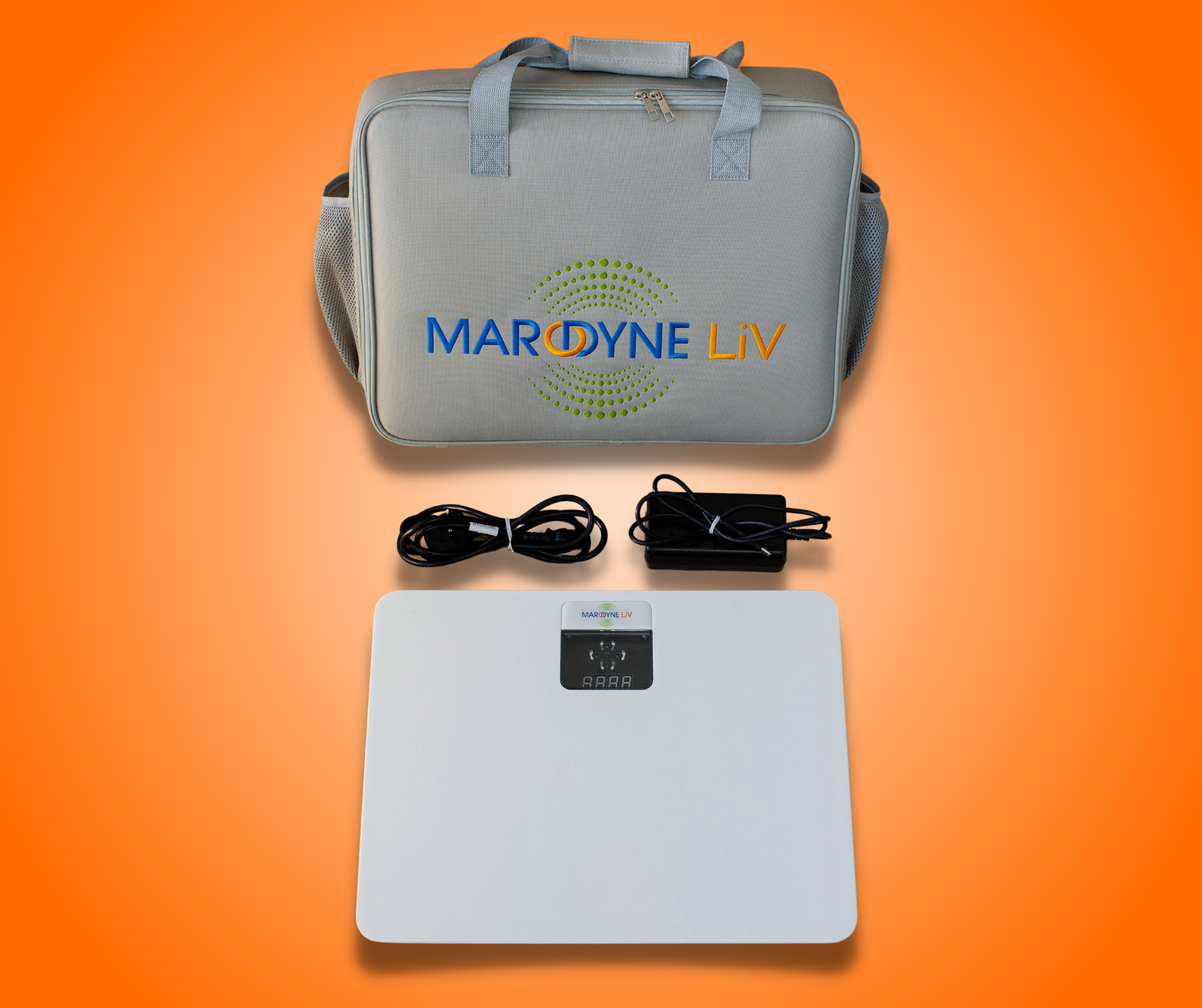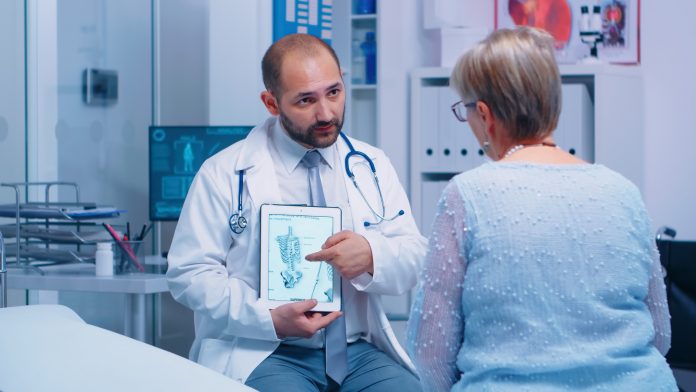MyBones explores the potential Low-intensity Vibration therapy has as a natural alternative to prevent and combat osteoporosis
Osteoporosis is a global health epidemic that affects millions. A recent report from the International Osteoporosis Foundation (IOF) found that 200 million people across Europe have osteoporosis, a number only set to rise as populations age. (1)
The disease represents a significant cost to healthcare providers, costing the NHS £5.5 billion per year. (2) This doesn’t account for the cost to the individual, their family, or the economy.
Many common treatments have side effects and contraindications that mean they are not always suitable for everyone, especially children. Low-intensity Vibration therapy offers a new and innovative way to prevent and combat osteoporosis, using gentle vibrations to stimulate the body’s cells and encourage bone growth.

Natural vibration therapy for osteoporosis
Vibrations or mechanical signals dictate many of the body’s natural biological processes. When we walk, every step sends a series of vibrations through our bone cells. These stimulate growth and play a key role in building healthy bones.
Ageing, hormones, and underlying health conditions affect how well our bodies respond to these signals and develop bone. Often it is a combination of these factors which reduces bone density and leads to the development of osteoporosis.
Astronauts experience a similar issue. Free from the forces of gravity, their bodies don’t experience the mechanical loading required to stimulate bone growth. This puts astronauts at an increased risk of osteoporosis. Recognising this, NASA tasked Professor Clinton Rubin with finding a solution.
He discovered a precise, targeted vibration that will mimic the body’s natural signals and encourage the mesenchymal stem cells in the bone marrow to reproduce. (3) Professor Rubin quickly realised the potential this technology had to improve bone health on Earth. After spending 35 years researching and refining the technology, the Marodyne LiV device was developed – a safe, effective, and certified Low-intensity Vibration plate.
Gentle, healing vibrations
When considering vibration therapy, it’s important to understand the intensity of a device before using it. Most whole-body vibration plates, typically those found in gyms, vibrate at a high intensity often exceeding 1.0g. This level of vibration has significant side effects and contraindications, making it unsuitable for many users, especially those with underlying health conditions such as osteoporosis. (4,5)
By contrast, the Marodyne LiV device has no contraindications and can be used safely with confidence by both children and adults. Vibrating at exactly 0.4g at 30hz, the device emits a high frequency but low magnitude signal – the exact calibration Professor Rubin found to increase bone density effectively.
Alongside the benefits to bones, Low-intensity Vibration therapy has been proven to deliver additional health benefits; as the plate vibrates, the muscles within the legs contract to stabilise the body. This improves muscle strength and balance, reducing the risk of falls.
Improved circulation is another benefit of using the Marodyne LiV device. As the plate vibrates, the vibrations stimulate muscles and encourage blood flow. (6)
Accessible and natural therapy
Many people can benefit from vibration therapy, especially those who are already at an increased risk of developing osteoporosis.
Whilst osteoporosis can affect anyone, women are most impacted, with half of women over 50 expected to develop the disease. (7) This is largely due to the impact menopause has on the body’s hormones. Through perimenopause and menopause, the body’s levels of oestrogen, testosterone and progesterone all drop. As these hormones regulate bone density, their reduction increases the likelihood of osteoporosis.
Extensive studies have established that Low-intensity Vibration therapy can prevent and combat osteoporosis. One systematic review concluded, “Low-magnitude whole-body vibration can provide a significant improvement in reducing bone loss in the lumbar spine in postmenopausal women.” (8)
Vibration therapy also provides additional benefits for paediatric care. Studies suggest Low-intensity Vibration therapy could aid children with conditions such as idiopathic scoliosis and osteogenesis imperfecta. (9,10) Since many common pharmacological treatments are not used for children due to their side effects, Low-intensity Vibration therapy offers a natural alternative with no contraindications or side effects.
Thousands of people across the world have already benefitted from Low-intensity Vibration therapy and its use by healthcare professionals is growing.
Certified as a class IIa medical device by the British Standards Institution (BSI), the device has the potential to form a core part of clinical guidelines in future care to combat osteoporosis.
Find out more about the Marodyne LiV device at https://mybones.health/liv-device/.
Written by Edward James, MyBones
References
(1) Willers, C., Norton, N., Harvey, N.C. et al. Osteoporosis in Europe: a compendium of country-specific reports. Arch
Osteoporos 17, 23 (2022). https://doi.org/10.1007/s11657-021-00969-8
(2) Willers, C., Norton, N., Harvey, N.C. et al. Osteoporosis in Europe: a compendium of country-specific reports. Arch
Osteoporos 17, 23 (2022). https://doi.org/10.1007/s11657-021-00969-8
(3) Pagnotti GM, Styner M, Uzer G, et al. Combating osteoporosis and obesity with exercise: leveraging cell mechanosensitivity. Nat Rev Endocrinol. 2019;15 (6):339-355. https://doi.org/10.1038/s41574-019-0170-1
(4) Alfio Albasini, et al. Using Whole Body Vibration in Physical Therapy and Sport: Clinical Practice and Treatment Exercises. Edinburgh, Churchill Livingstone, 2010.
(5) Maggiano, J., Yu, MC.M., Chen, S. et al. Retinal tear formation after whole-body vibration training exercise. BMC Ophthalmology 20, 37 (2020). https://doi.org/10.1186/s12886-019-1291-y
(6) Stewart, Julian M et al. “Plantar vibration improves leg fluid flow in perimenopausal women.” American journal of physiology. Regulatory, integrative and comparative physiology vol. 288,3 (2005): R623-9. https://doi.org/10.1152/ajpregu.00513.2004
(7) International Osteoporosis Foundation. ‘Broken Bones, Broken Lives: A Roadmap to Solve the Fragility Fracture Crisis in the United Kingdom’, 2018
(8) Ma, C., Liu, A., Sun, M. et al. Effect of whole-body vibration on reduction of bone loss and fall prevention in postmenopausal women: a meta-analysis and systematic review. J Orthop Surg Res 11, 24 (2016). https://doi.org/10.1186/s13018-016-0357-2
(9) Lam TP, Ng BK, Cheung LW, Lee KM, Qin L, Cheng JC. Effect of whole body vibration (WBV) therapy on bone density and bone quality in osteopenic girls with adolescent idiopathic scoliosis: a randomized, controlled trial. Osteoporos Int. 2013; 24(5):1623-1636. https://doi.org/10.1007/s00198-012-2144-1
(10) Semler O, Fricke O, Vezyroglou K, Stark C, Stabrey A, Schoenau E. Results of a prospective pilot trial on mobility after whole body vibration in children and adolescents with osteogenesis imperfecta. Clin Rehabil. 2008;22 (5):387-394. https://doi.org/10.1177/0269215507080763
Please note: This is a commercial profile
© 2019. This work is licensed under CC-BY-NC-ND.












Does the vibration therapy include some one already with ostioporious